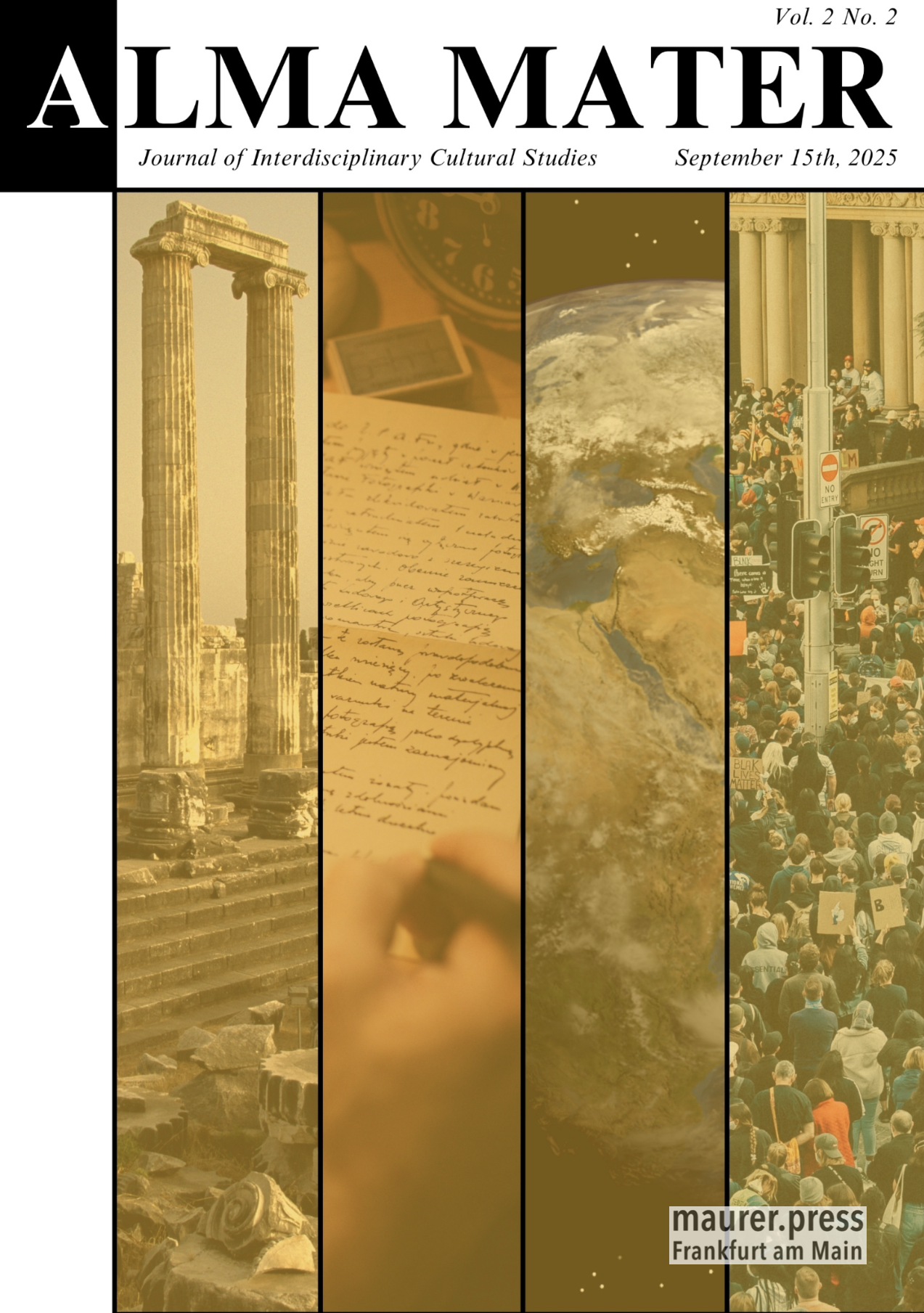| Open Access
Alma Mater – Zeitschrift für interdisziplinäre Kulturforschungen 2025, Bd. 2(3) 175-189
Remembering Alternative Futures: Tom Cruise and the Subtle Revolution of Science Fiction Action Cinema by Mid-2010s
S. 175 - 189 | DOI: https://doi.org/10.29329/almamater.2025.1360.14
Veröffentlichungsdatum: Oktober 07, 2025 | Einzeln/Gesamtansichten: 0/0 | Einzeln/Gesamtdownloads: 0/0
Zusammenfassung
Science fiction has long served as a dynamic platform for examining humanity’s future, technological innovation, and profound existential questions. By mid-2010s, the genre of science fiction action cinema had matured into a complex and sophisticated form, merging intellectually ambitious story-telling with visually breathtaking, technologically advanced cinematography, often anchored by compelling performances from prominent actors. During this period, audiences were captivated not only by the sheer entertainment value of such movies, but also by their capacity to provoke deeper contemplation on philosophical and existential themes, particularly concerning humanity’s evolving relationship with technology. In a mixed methodological approach (ethnographic description, media discourse analysis, hermeneutic interpretation), this paper examines two recent live action blockbusters within the science fiction category, both featuring Tom Cruise in the lead role – Oblivion (2013) and Edge of Tomorrow (2014) – which re-define the genre by adopting a philosophy of pragmatic exploration and hands-on experimentation through intricate visual-auditory constructions. In doing so, they challenge the foundational principles which have traditionally underpinned the global cinematic production and distribution model: despite their distinct aesthetic approaches, thematic compositions, and ideological underpinnings, both movies engage critically with themes of individual self-awareness, historical consciousness, and the protagonist’s role in his own transformation as a necessary precondition to saving the world. Through the lens of male central characters, these narratives explore the multifaceted process of personal growth against the backdrop of fractured historical events and a progressively eroded sense of identity, purpose, and orientation within the contexts which shaped them. By delving into Oblivion’s and Edge of Tomorrow’s cinematic mechanisms, the study aims at revealing the ways in which science fiction action movies can serve as blueprints for resilient, liberated individuals – capable of courage, dedication, and compassion as they strive to lead purposeful lives.
Schlüsselwörter: pragmatic humanism, identity, memory, war and peace, aliens, endangered humanity
APA 7. Auflage
Grajdian, M.M. (2025). Remembering Alternative Futures: Tom Cruise and the Subtle Revolution of Science Fiction Action Cinema by Mid-2010s. Alma Mater – Zeitschrift für interdisziplinäre Kulturforschungen, 2(3), 175-189. https://doi.org/10.29329/almamater.2025.1360.14
Harvard
Grajdian, M. (2025). Remembering Alternative Futures: Tom Cruise and the Subtle Revolution of Science Fiction Action Cinema by Mid-2010s. Alma Mater – Zeitschrift für interdisziplinäre Kulturforschungen, 2(3), pp. 175-189.
Chicago 16. Auflage
Grajdian, Maria Mihaela (2025). "Remembering Alternative Futures: Tom Cruise and the Subtle Revolution of Science Fiction Action Cinema by Mid-2010s". Alma Mater – Zeitschrift für interdisziplinäre Kulturforschungen 2 (3):175-189. https://doi.org/10.29329/almamater.2025.1360.14
